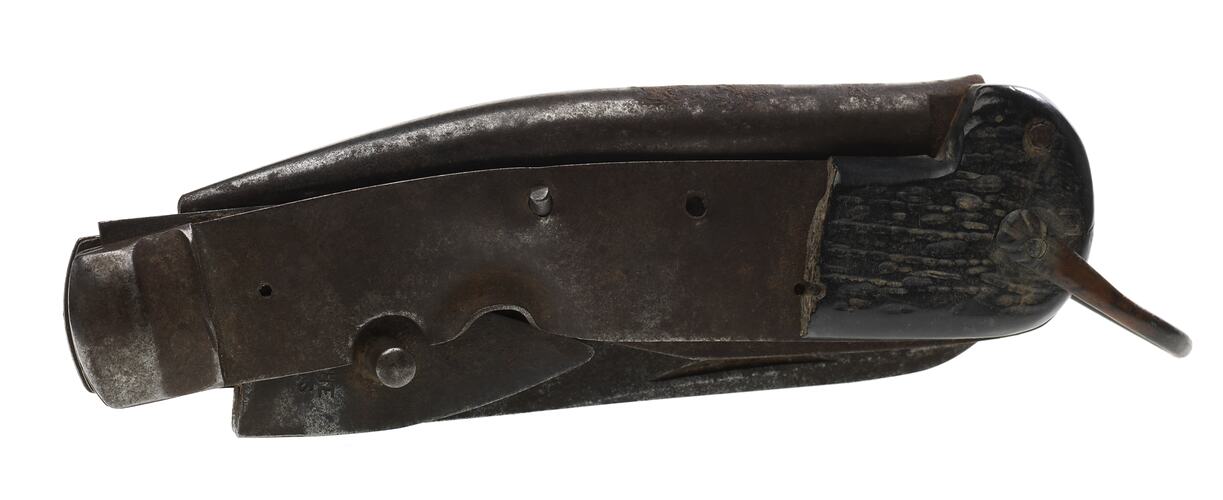Summary
World War I army G.P. clasp knife with a deflection mark from ball shrapnel or a bullet. Its owner was Corporal Cousland of the 22nd Battalion, service # 3808, A.I.F. His life was said to have been saved by the knife in France. A knife like this was usually carried on a belt, but he decided to carry it in his top pocket, where he was struck.
Part of a collection of material relating to the World War I military service of Hans Harry Cousland. Harry was a 21-year-old labourer from Port Melbourne when he enlisted to serve in World War I in 1915. He was wounded on 26 August 1916, recovered and returned to the front. There he was promoted then wounded again on 14 January 1917, receiving a gunshot wound in his left forearm which severed his ulnar nerve and caused a compound fracture of his left radius. He was operated on but his wound healed incorrectly with on-going nerve damage, and he was left with 'total incapacity' of his arm. He returned to Australia on 31 December 1917 on the hospital ship Themistocles and discharged medically-unfit in August 1918.
Physical Description
Knife has blade and two implements for removing stones from horses' hooves. Black composition grips - one side broken where hit by bullet.
More Information
-
Collection Names
-
Collecting Areas
-
Acquisition Information
Donation & Subsequent Transfer from Victorian Branch, Returned & Services League of Australia Limited (RSL), Mrs A M. Cousland, May 1982
-
User
Corporal Hans H. Cousland - Australian Imperial Force (AIF), France, 1915-1919
-
Inscriptions
Blade stamped 'E.C. Simmons Keen Kutter St. Louis, U.S.A'.
-
Classification
-
Category
-
Discipline
-
Type of item
-
Overall Dimensions
124 mm (Width), 40 mm (Depth), 23 mm (Height)
-
Keywords
Knives & Daggers, Militaria: Australian, World War I, 1914-1918


